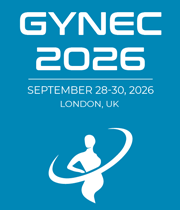Title : Endometriosis global prevalence, comorbidity risk, and cumulative health burden
Abstract:
Intro. Endometriosis and connective tissue disorders are two under-researched and under- diagnosed chronic conditions with overlapping symptomologies and patient demographics. Women with endometriosis and hypermobile Ehlers-Danlos syndrome (hEDS; a genetic connective tissue disorder) often face considerable delays in diagnosis and treatment, which prolong pain and dysfunction. Although women with these two conditions often report similar genitourinary symptoms (e.g., pelvic pain), there are conflicting perspectives in the medical community regarding the likelihood of someone with endometriosis receiving a co-occurring diagnosis of hEDS. This study aims to investigate the global prevalence of endometriosis, the risk of receiving a comorbid diagnosis of hEDS, and the cumulative toll of being diagnosed with both conditions.
Method. Electronic health records from over 40 million women across 108 global healthcare servers were queried using the TriNetX database . After exploring the phenotypic presentation of women in each cohort, contingency tables were created with endometriosis as the condition and hEDS as the grouping variable to determine comorbidity risk. Then, advanced analytics were performed to explore cumulative burden of these conditions by comparing women with both endometriosis and hEDS to women with a sole diagnosis of endometriosis. After propensity score matching, differences in relevant (non)surgical outcomes were examined. All analyses restricted age (12-55 years) and sex (female).
Results. TriNetX international health records (N=504,894) reveal that endometriosis is diagnosed at a mean age of 42 years (Range = 12-55) and predominantly occurs in women identifying as White (58.5%) and Non-Hispanic (64.2%). Women diagnosed with endometriosis have a high prevalence of comorbid connective tissue/musculoskeletal disorders (56%), with women living with endometriosis being 7.24 times more likely to receive a comorbid diagnosis of hEDS, compared to people not diagnosed with endometriosis (p < .0001, 95% CI: 6.89, 7.60). Compared to women with a sole diagnosis of endometriosis, women diagnosed with both endometriosis and hEDS are (a) 2.06 times more likely to have pelvic pain (95%CI: 1.79, 2.38; Risk difference: 17.58%, z = 10.03, p<.0001), (b) 1.25 times more likely to have female genital system surgery (95%CI: 1.07, 1.46; Risk difference, z = 2.81, p<.005), (c) 2.39 times more likely to have digestive system surgery (95%CI: 2.01, 2.85; Risk difference: 14.77%, z = 9.99, p<.0001), (d) 2.47 times more likely to have urinary system surgery (95%CI: 1.97, 3.10; Risk difference: 9.39%, z = 8.05, p<.0001), and (e) 4.78 times more likely to undergo physical therapy for pain management (95%CI: 3.94, 5.81; Risk difference: 24.53%, z = 16.70, p<.0001).
Discussion. This study highlights the global prevalence and phenotypic presentation of endometriosis and the risk of receiving a comorbid connective tissue disorder diagnosis. The cumulative toll of living with both endometriosis and hEDS is evident in significantly greater risk of experiencing pelvic pain, undergoing multiple types of surgeries, and engaging in physical therapy to mitigate pain and improve function. Understanding the overlap in endometriosis and hEDS symptomologies and patient populations has the potential to improve approaches to diagnosis and care management.




